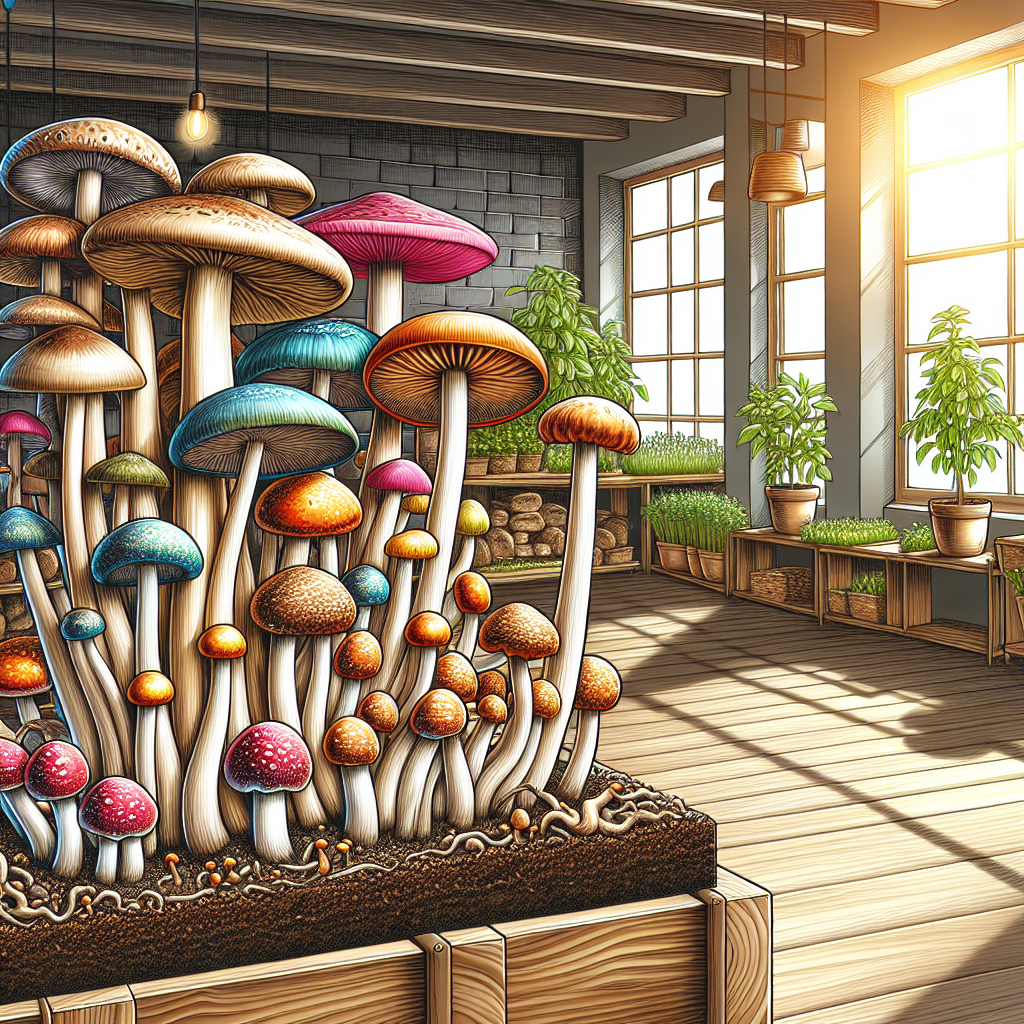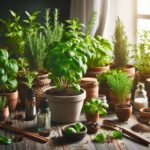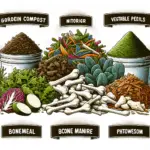Benefits of Growing Mushrooms
There are numerous benefits to growing your own mushrooms at home. Not only is it a rewarding and enjoyable experience, but it also offers a range of advantages that make it a worthwhile endeavor.
1. Fresh and Nutritious
Growing your own edible mushrooms ensures that you have access to the freshest produce possible. Mushrooms are a rich source of various nutrients such as vitamins, minerals, and antioxidants, making them a valuable addition to a healthy diet.
2. Cost-Effective
By cultivating mushrooms at home, you can significantly reduce your grocery expenses. Purchasing mushroom growing kits or spores is relatively inexpensive, especially when compared to buying fresh mushrooms regularly from the store.
3. Sustainable Practice
Home cultivation of mushrooms is an eco-friendly practice. You can control the growing conditions, avoid harmful pesticides, and reduce the carbon footprint associated with transporting commercially grown mushrooms.
4. Variety of Mushroom Types
When you grow mushrooms at home, you have the freedom to choose from a wide variety of mushroom species to cultivate. This allows you to experiment with different flavors, textures, and culinary uses that may not be readily available in stores.
5. Educational Experience
Growing mushrooms provides a valuable learning opportunity about the fungal kingdom, biology, and agriculture. It can be a fascinating and educational experience for both children and adults alike.
6. Therapeutic and Stress-Relieving
Engaging in the process of growing mushrooms can be a therapeutic and stress-relieving activity. It offers a way to connect with nature, practice mindfulness, and enjoy the calming effects of nurturing living organisms.
Nutritional Value of Mushrooms
Mushrooms are not only delectable additions to various dishes but also offer a treasure trove of essential nutrients that contribute to overall well-being.
Rich in Proteins
Mushrooms are a great source of vegetarian-friendly proteins, making them a valuable component in plant-based diets.
Vitamins and Minerals
These fungi are packed with essential vitamins such as vitamin D, vitamin B complex, and minerals like potassium and selenium.
Low in Calories
For those mindful of their caloric intake, mushrooms are a smart choice as they are low in calories but high in nutrients.
Antioxidant Properties
With their antioxidant properties, mushrooms help in combating oxidative stress and reducing the risk of chronic diseases.
Contribution to Immunity
The beta-glucans present in mushrooms have been linked to improving immune function, aiding in the body’s defense mechanisms.
Environmental Impact of Home-Grown Mushrooms
Home-grown mushrooms not only offer a fresh and sustainable food source but also come with various environmental benefits. Let’s delve into the positive impacts of cultivating edible mushrooms at home:
1. Reduction of Carbon Footprint
Growing mushrooms at home contributes to lowering carbon emissions compared to commercially grown mushrooms. By eliminating the need for long-distance transportation and excessive packaging, you are supporting a more sustainable and eco-friendly food system.
2. Waste Reduction
Mushrooms can be cultivated using various organic materials such as coffee grounds, straw, and paper waste. By recycling these items into a nutrient-rich substrate for mushroom growth, you are contributing to waste reduction and composting.
3. Preservation of Biodiversity
Home-growing mushrooms harmonizes with nature by preserving biodiversity. By mimicking natural habitats where mushrooms thrive, you are creating a mini ecosystem that promotes healthy soil and beneficial microorganisms.
4. Reduced Water Usage
Compared to many other crops, mushrooms require minimal amounts of water for growth. By cultivating mushrooms at home, you are conserving this precious resource and reducing water waste associated with conventional agriculture.
The environmental implications of home-grown mushrooms extend beyond your kitchen, fostering a sustainable and regenerative approach to food production.
Choosing the Right Mushroom Varieties
When it comes to growing edible mushrooms at home, selecting the right varieties is essential. Each type of mushroom has its own growing requirements and flavors, so consider the following factors before making your choice:
Factors to Consider:
- Space: Different mushroom varieties have varying space requirements. Consider how much room you have available for your mushroom growing setup.
- Climate: Some mushrooms thrive in cooler environments, while others prefer warmer conditions. Ensure the variety you choose matches your climate.
- Time: Certain mushrooms require more time and attention to grow successfully. Consider your schedule and commitment level.
- Taste: Each mushroom variety offers a unique flavor profile. Choose a type that aligns with your culinary preferences.
Popular Mushroom Varieties for Home Cultivation:
| Mushroom Variety | Growth Time | Flavor Profile |
|---|---|---|
| Button Mushrooms | 2-3 weeks | Classic earthy flavor |
| Shiitake Mushrooms | 3-6 months | Rich and savory taste |
| Oyster Mushrooms | 2-3 weeks | Mild and sweet flavor |
Explore these popular varieties to start your mushroom cultivation journey. Remember to research each type’s specific growing requirements for the best results.
Popular Edible Mushroom Species
When it comes to growing edible mushrooms at home, certain species are particularly popular due to their taste, ease of cultivation, and nutritional value. Let’s explore some widely favored edible mushroom species:
1. Shiitake Mushrooms
Originating from East Asia, shiitake mushrooms are renowned for their rich, savory flavor and meaty texture. They are a staple in many Asian dishes and are prized for their potential health benefits, including boosting the immune system.
2. Oyster Mushrooms
Oyster mushrooms are versatile and easy to cultivate, making them a favorite among home growers. They have a mild, delicate flavor and a unique shape reminiscent of oyster shells, hence their name. Oyster mushrooms are a great source of protein and several essential nutrients.
3. Portobello Mushrooms
With their large size and robust flavor, portobello mushrooms are often used as a meat substitute in vegetarian dishes. These mushrooms have a dense, meaty texture and a rich, earthy taste, making them a popular choice for grilling or stuffing.
4. Button Mushrooms
Button mushrooms, also known as white mushrooms, are one of the most commonly consumed mushroom varieties worldwide. They have a mild flavor that pairs well with a wide range of dishes and are readily available in most grocery stores.
5. Morel Mushrooms
Considered a gourmet delicacy, morel mushrooms are highly prized for their nutty and earthy flavor profile. These mushrooms have a distinctive honeycomb texture and are often foraged in the wild, although they can also be cultivated at home under the right conditions.
Considerations for Beginners
Starting Your Mushroom Journey
Embarking on the journey of growing edible mushrooms at home can be both exciting and rewarding. As a beginner, there are several key considerations to keep in mind to ensure a successful harvest.
Choosing the Right Mushroom Variety
Selecting the appropriate mushroom variety is crucial. Consider starting with beginner-friendly species such as oyster mushrooms or shiitake, known for their ease of cultivation and tolerance to variations in growing conditions.
Setting Up the Growing Environment
- Ensure your growing area has optimal conditions, including good air circulation, humidity control, and indirect light.
- Use a suitable container or substrate for growing the mushrooms, such as a plastic bag filled with a sterilized growing medium.
Maintaining Proper Hygiene
“Maintaining sterile conditions is crucial to prevent contamination and ensure a healthy mushroom crop.”
Always wash your hands thoroughly before handling the growing materials and wear gloves to minimize the risk of introducing unwanted organisms.
Monitoring Growth and Development
| Key Aspect | How to Monitor |
|---|---|
| Mycelium Growth | Regularly check the substrate for visible signs of mycelium colonization. |
| Pinhead Formation | Observe the appearance of pinheads indicating the onset of mushroom formation. |
| Mushroom Development | Monitor the growth of mushrooms and harvest them at the optimal stage. |
Seeking Guidance and Resources
Do not hesitate to reach out to fellow mushroom enthusiasts, online communities, or reference guides for valuable tips and insights on nurturing your mushroom crop.
Setting Up the Growing Environment
Choosing the Right Location
When setting up your mushroom growing environment, select a space that maintains a consistent temperature between 55-75°F and high humidity levels. Avoid areas with direct sunlight or drafts.
Creating the Ideal Growing Conditions
To foster optimal growth, control the humidity by misting the growing area regularly. Use a humidifier if necessary, aiming for 90-95% humidity. Additionally, ensure proper air circulation by using fans or vents to prevent stagnant air.
Lighting Considerations
Mushrooms do not require light to grow, so you can place them in a dark location. However, providing minimal indirect light can help with orientation and development.
Sanitization Practices
Keep your growing environment clean to prevent contamination. Use a diluted bleach solution to sterilize surfaces and equipment before starting the cultivation process.
Monitoring and Adjusting
Regularly monitor the temperature, humidity levels, and airflow in the growing area. Be prepared to make adjustments based on the specific requirements of the mushroom species you are cultivating.
Creating a Suitable Growing Space
When it comes to growing edible mushrooms at home, creating a suitable growing space is crucial for success. Here are some key considerations to ensure your mushrooms thrive:
1. Choosing the Right Location
- Light: Find a spot that receives indirect sunlight or artificial light, as mushrooms don’t need direct sunlight to grow.
- Temperature: Maintain a consistent temperature between 55-65°F (13-18°C) for most mushroom varieties.
- Air Circulation: Ensure good airflow to prevent the buildup of carbon dioxide around the mushrooms.
2. Creating the Growing Environment
- Humidity: Mushrooms thrive in high humidity levels (around 90%), so consider using a humidifier or misting the area regularly.
- Substrate: Choose a suitable substrate like sawdust, straw, or coffee grounds for your mushrooms to grow on.
- Containers: Use containers like plastic bins or grow bags to hold the substrate and create the ideal growing conditions.
3. Controlling Contamination
- Cleanliness: Keep your growing space clean and sterilized to prevent contamination from harmful bacteria or mold.
- Sanitization: Use gloves and sanitize tools to minimize the risk of introducing contaminants to the growing environment.
- Isolation: Consider isolating your mushroom growing area to limit the spread of contaminants from other parts of your home.
Controlling Humidity and Temperature
Optimal Conditions for Mushroom Growth
Maintaining the right levels of humidity and temperature is crucial for successful mushroom cultivation. Mushrooms thrive in environments with specific ranges of these two factors.
Monitoring and Adjusting Humidity
Humidity Levels: Mushrooms require humidity levels between 80-90% for proper growth. Use a hygrometer to measure humidity accurately.
- Regularly mist the growing area to increase humidity if needed.
- Consider using a humidifier to control humidity levels consistently.
- Avoid over-saturating the air, as this can lead to mold growth.
Regulating Temperature
Temperature Range: Most edible mushrooms flourish in temperatures between 55-75°F (13-24°C).
- Use a thermometer to monitor the temperature regularly.
- Provide insulation if necessary to maintain consistent heat levels.
- Avoid drastic temperature fluctuations, as this can stress the mushroom mycelium.
Creating an Ideal Environment
To ensure optimal conditions for mushroom growth:
- Ventilation: Allow for adequate air circulation to prevent the buildup of excess moisture.
- Light: Mushrooms do not require light for growth, but ambient light can help regulate temperature.
Quote:
“Maintaining a harmonious balance of humidity and temperature is the cornerstone of a flourishing mushroom cultivation journey.”
Selecting the Growing Medium
When it comes to growing edible mushrooms at home, selecting the right growing medium is crucial for the success of your mushroom cultivation. The growing medium serves as the foundation for your mushrooms to thrive and develop into healthy, flavorful specimens.
Key Considerations
Before selecting a growing medium for your mushrooms, consider the following factors:
- Moisture Retention: The growing medium should have good moisture retention properties to ensure optimal mushroom growth.
- Nutrient Content: Different mushroom species have varying nutrient requirements. Choose a growing medium that provides essential nutrients for your specific mushrooms.
- Aeration: Adequate aeration is vital for the roots of the mushrooms to breathe and facilitate healthy growth.
- pH Levels: Consider the pH levels of the growing medium as different mushrooms thrive in varying pH ranges.
Common Growing Mediums
There are several common options for growing mediums, each with its own advantages and ideal mushroom species:
- Peat Moss: Known for its moisture retention and slight acidity, peat moss is suitable for a variety of mushroom species.
- Straw: Often used for mushrooms like oyster mushrooms, straw provides good aeration and nutrient content.
- Sawdust: Ideal for species such as shiitake mushrooms, sawdust can offer a balanced combination of nutrients.
Homemade Versus Store-Bought
While you can purchase pre-made mushroom growing kits, creating your own growing medium can be a rewarding experience. Homemade mediums allow for customization and can be more cost-effective in the long run.
However, if you prefer convenience or are new to mushroom cultivation, store-bought growing mediums provide a straightforward option to kickstart your mushroom-growing journey.
Different Types of Substrates
Choosing the right substrate is crucial for successfully growing edible mushrooms at home. Different types of mushrooms thrive on different substrates, so it’s essential to match the mushroom species with the appropriate substrate.
1. Common Substrates for Edible Mushrooms
- Compost: Compost made from a mix of materials like straw, corn cobs, and gypsum is suitable for a wide range of mushrooms.
- Sawdust: Many gourmet mushrooms such as oyster and shiitake grow well on sawdust substrates.
- Straw: Straw is commonly used for growing mushrooms like oyster and lion’s mane due to its nutrient content.
- Coffee Grounds: Used coffee grounds are a sustainable substrate option for certain mushroom varieties.
2. Specialty Substrates
For enthusiasts looking to experiment with unique substrates, there are several unconventional options:
- Cardboard: Mushroom mycelium can colonize cardboard, making it a cost-effective substrate for some species.
- Sawdust Pellets: Compressed sawdust pellets offer a convenient and consistent substrate for mushroom cultivation.
3. Considerations for Substrate Selection
When deciding on a substrate, keep the following factors in mind:
- Moisture Retention: Ensure the substrate can hold water without becoming waterlogged.
- Nutrient Content: Different mushrooms have varying nutrient requirements, so choose substrates accordingly.
- pH Levels: The acidity or alkalinity of the substrate can impact mushroom growth, so pH balance is crucial.
By understanding the properties of different substrates and their suitability for various mushroom species, you can enhance the success of your home mushroom cultivation endeavors.
Pros and Cons of Each Medium
Soil
Pros:
- Familiar medium for many gardeners, making it easy to manage.
- Natural nutrients present in soil help nourish mushroom growth.
- Moisture retention in soil aids in maintaining optimal growing conditions.
Cons:
- Potential for soil-born diseases that could harm mushroom growth.
- More challenging to control pH levels in soil compared to other mediums.
- Difficulty in sterilizing soil completely, leading to contamination risks.
Substrate Bags
Pros:
- Highly convenient and easy to use, especially for beginners.
- Reduced risk of contamination due to controlled sterile environment.
- Compact and space-saving, ideal for indoor mushroom cultivation.
Cons:
- Limited nutrient content compared to soil, requiring additional supplementation.
- Less environmentally friendly due to the disposable nature of bags.
- May restrict certain mushroom varieties that require specific conditions.
Hydroponic Systems
Pros:
- Precise control over nutrient delivery, promoting optimal growth.
- Less susceptibility to pests and diseases commonly found in soil-based mediums.
- Efficient use of water resources in a closed-loop system.
Cons:
- Initial setup costs for hydroponic systems can be higher than other methods.
- Requires a learning curve to effectively manage nutrient levels and system operation.
- Power-dependent systems may be less sustainable in certain environments.
Inoculation and Spawning
When it comes to cultivating edible mushrooms at home, the processes of inoculation and spawning are crucial stages that require precision and care. Below, we delve into the intricacies of these vital steps to help you foster a successful mushroom growing environment.
Inoculation Process
Inoculation is the initial step where the mushroom substrate is introduced to the fungal spores, kickstarting the growth process. Here are key points to consider during inoculation:
- Selecting the Substrate: Ensure the substrate is sterile and well-suited for the specific mushroom species you intend to grow.
- Creating a Sterile Environment: Work in a clean, sterile area or use a flow hood to prevent contamination.
- Inoculation Techniques: Methods like spore syringes, agar wedges, or liquid culture can be employed based on the chosen mushroom variety.
Spawn Preparation
After successful inoculation, spawn preparation becomes the next vital phase in mushroom cultivation. Here’s a brief overview of the spawn preparation process:
- Incubation: Keep the inoculated substrate in a controlled environment with optimal temperature and humidity to promote mycelium growth.
- Spawning: Once the mycelium has colonized the substrate, it is ready for spawning into the final growth medium.
- Spawning Conditions: Maintain ideal conditions such as proper ventilation, moisture levels, and temperature to ensure successful spawning.

Mastering the intricacies of inoculation and spawning is fundamental in the art of growing edible mushrooms at home. These initial steps lay the foundation for healthy mushroom development and a bountiful harvest.
Understanding Spores and Spawn
When delving into the realm of mushroom cultivation, it is crucial to comprehend the significance of spores and spawn. These fundamental components play a pivotal role in the growth and development of mushrooms.
Spores: The Beginnings of Life
Spores are akin to seeds in the fungal world, serving as the starting point of mushroom growth. These microscopic reproductive units are released by mature mushrooms and carry the genetic material necessary for new fungal colonies to flourish.
- Spores are highly resilient and can survive harsh conditions, making them ideal for propagation.
- The diversity of mushroom species is reflected in the unique characteristics of their spores, which vary in color, shape, and size.
Spawn: Nurturing Growth
Spawn acts as the foundation for cultivating mushrooms, providing a suitable environment for spores to germinate and develop into mycelium. This crucial stage sets the groundwork for the formation of the fruiting bodies we recognize as mushrooms.
“Spawn can be thought of as the intermediary stage between spores and fully grown mushrooms, facilitating the transition from potential to fruition.”
Key points about spawn:
- Spawn can be obtained commercially or generated from existing mushroom cultures.
- Quality spawn is essential for successful cultivation, as it influences the vigor and productivity of mushroom growth.
Understanding the intricate relationship between spores and spawn is fundamental to mastering the art of cultivating mushrooms at home. These foundational elements shape the trajectory of growth and pave the way for a bountiful harvest.
Methods for Inoculating the Substrate
When it comes to inoculating the substrate for growing edible mushrooms at home, several methods can be used to introduce the mushroom spawn into the growing medium. Each method has its own advantages and suitability for different types of mushrooms.
1. Traditional Method:
In the traditional method, the mushroom spawn is mixed thoroughly with the substrate material in a sterile environment. This ensures even distribution of the spawn throughout the growing medium, promoting uniform mushroom growth.
2. Perforation Method:
In this method, the mushroom spawn is placed in perforations or holes made in the substrate material. This method is particularly useful for substrates with a complex structure or when using logs or larger growing containers.
3. Layering Method:
The layering method involves creating alternating layers of substrate and mushroom spawn. This method is beneficial for substrates that may benefit from a more gradual colonization process, allowing the mycelium to establish itself effectively.
Regardless of the method chosen, it is crucial to maintain proper hygiene and sterility during the inoculation process to prevent contamination and ensure the successful growth of edible mushrooms.
Managing the Growth Process
Creating the Ideal Environment
To successfully grow edible mushrooms at home, it is crucial to set up the ideal environment for their growth. Here are some key points to consider:
- Temperature: Maintain a consistent temperature range suitable for the specific mushroom species.
- Humidity: Keep the humidity levels high to mimic the natural habitat of mushrooms.
- Light: Although some mushrooms require light, most prefer darkness, so ensure they are not exposed to direct sunlight.
- Ventilation: Proper airflow is essential to prevent the buildup of carbon dioxide around the mushrooms.
Monitoring Growth Progress
Monitoring the growth of your mushrooms is essential to ensure a successful harvest. Here are some tips on how to effectively track their progress:
- Visual Inspection: Regularly check the growth status of the mushrooms to identify any issues early on.
- Record Keeping: Maintain a journal noting growth patterns, any changes observed, and adjustments made.
- Sensory Evaluation: Use your senses to detect any abnormal odors or textures that could indicate a problem.
Managing Contamination Risks
Contamination poses a significant threat to mushroom growth. Here are some ways to minimize the risk of contamination:
- Sterilization: Use sterilized equipment and materials to prevent the introduction of harmful microorganisms.
- Sanitization: Maintain a clean growing environment by regularly sanitizing surfaces and tools.
- Isolation: Separate different mushroom varieties to prevent cross-contamination.
Adjusting Growth Parameters
As mushrooms grow, it may be necessary to adjust certain parameters to optimize their development. Here are some guidelines for making adjustments:
“Regularly assess the environmental conditions and be prepared to make changes to ensure the continued growth and health of your mushrooms.”
- Watering: Maintain proper moisture levels by adjusting the watering frequency based on the growth stage.
- Nutrient Supplementation: Supplement the substrate with additional nutrients if signs of deficiency appear.
Monitoring Growth Conditions
Importance of Monitoring
**Monitoring** the growth conditions of your **edible mushrooms** is crucial to ensure they thrive and produce a bountiful harvest. By keeping a close eye on various factors, you can **optimize** the environment for your mushrooms’ growth.
Key Parameters to Monitor
When **monitoring** the growth conditions of your mushrooms, focus on the following key parameters:
- Temperature: Maintain a stable temperature within the ideal range for your specific mushroom species.
- Humidity: Ensure the **humidity** levels are adequate to promote **healthy** **growth.**
- Light: Some mushrooms require **light** exposure, while others thrive in darkness. Understand the light preferences of your mushrooms.
- Air Quality: Good **air** circulation is essential to prevent the buildup of contaminants and ensure **optimal** conditions for growth.
Monitoring Techniques
Utilize the following techniques to effectively monitor the growth conditions:
- Regular Inspections: **Check** your mushrooms daily to look for any signs of **issues** such as **mold** or **pests.**
- Use of Instruments: Invest in **hygrometers** and **thermometers** to accurately measure **humidity** and temperature levels.
- Recording Data: Keep a **journal** of the **environmental** conditions and any **observations** you make to track the **progress** of your mushrooms.
Adjusting Conditions
If **monitoring** reveals **imbalances** in the growth conditions, take prompt **actions** to **rectify** the situation:
**Adjust** the temperature settings, **mist** the environment to increase humidity, or **reposition** the mushrooms to ensure they receive adequate light.
Quotes
“Monitoring the growth conditions of your edible mushrooms is the key to a successful harvest.”
Dealing with Common Issues like Contamination
When growing edible mushrooms at home, encountering contamination issues can be disheartening. However, with proper knowledge and proactive measures, these challenges can be effectively managed.
Identifying Common Contaminants
Contamination can arise from various sources, including bacteria, mold, or other fungi. It is crucial to swiftly identify the type of contaminant to implement the appropriate solution.
Preventative Measures
- Sterilization: Ensure that all equipment and materials are properly sterilized before use to minimize the risk of contamination.
- Clean Environment: Maintain a clean and well-ventilated growing area to discourage contaminants from thriving.
- Proper Handling: Practice good hygiene and handling procedures to prevent introducing contaminants to the growing environment.
Addressing Contamination
Should contamination occur, swift action is essential to prevent further spread.
“Isolate the contaminated area immediately to prevent the spread of contaminants to unaffected portions of your mushroom cultivation.“
Consulting Experts
If faced with persistent contamination issues, do not hesitate to seek advice from experienced growers or mycologists. Their insights can help identify the root cause and provide tailored solutions.
Harvesting and Storing Mushrooms
Harvesting Tips
When it comes to harvesting mushrooms from your home cultivation, timing is crucial. Here are some essential tips to ensure a successful harvest:
- Harvest at the Right Time: Harvest your mushrooms just before the caps start to flatten out.
- Cut, Don’t Pull: Use a sharp knife to cut the mushrooms at the base of the stem. Avoid pulling them out, as this can damage the mycelium.
- Keep it Clean: Ensure your hands and tools are clean to prevent contamination.
Storing Guidelines
Proper storage of harvested mushrooms is essential to maintain their freshness and flavor. Follow these guidelines:Refrigeration: Store mushrooms in a paper bag or a breathable container in the refrigerator. Avoid sealing them in airtight bags as this can lead to moisture buildup. Avoid Plastic: Avoid storing mushrooms in plastic bags as they can accelerate spoilage due to trapped moisture. Don’t Wash: Avoid washing mushrooms until you are ready to use them. Excess moisture can cause them to decay quickly.
Quote of Inspiration
“Harvesting mushrooms is a delicate art, where patience and precision yield the most flavorful rewards.”
Best Practices for Harvesting
Timing Is Key
Harvest your mushrooms when they are young and firm. Avoid letting them become excessively mature as this can affect their taste and texture.
Proper Technique
When harvesting, twist the stem gently or use a sharp knife to cut the mushroom just above the soil level. Be careful not to damage the surrounding mycelium.
Continuous Harvesting
For continuous harvest, pick the mushrooms regularly as soon as they are ready. This encourages new growth and ensures a fresh supply of mushrooms.
Storage Tips
Store harvested mushrooms in a paper bag or breathable container in the refrigerator. Avoid plastic bags as they can cause moisture buildup and spoil the mushrooms.
Inspect Before Harvesting
Before harvesting, inspect each mushroom carefully for any signs of spoilage or pests. Discard any mushrooms that appear slimy, discolored, or with insect damage.
Quote:
“Harvesting mushrooms with care and attention is crucial to enjoying the freshest flavors in your culinary creations.” – Mushroom Harvesting Guide
Tips for Storing Mushrooms for Freshness
When it comes to preserving the freshness of your mushrooms, proper storage is key. Follow these tips to ensure your mushrooms stay fresh for longer periods:
Store in a Paper Bag
Place your mushrooms in a paper bag to allow for air circulation while keeping them in a dark environment. This helps maintain their freshness by preventing moisture buildup that can lead to spoilage.
Avoid Plastic Bags
While it may be tempting to store mushrooms in plastic bags for convenience, avoid doing so as plastic can trap moisture and cause the mushrooms to deteriorate quickly.
Remove Packaging
After purchasing mushrooms from the store, remove them from any plastic wrapping or containers they may have come in. Transfer them to a paper bag or a breathable container for optimal storage.
Refrigerate Properly
Keep your mushrooms in the refrigerator, ideally in the vegetable crisper drawer where the temperature and humidity levels are suitable for storing fresh produce.
Avoid Washing Before Storage
Only wash your mushrooms right before you plan to use them. Moisture from washing can promote mold growth, so it’s best to clean them just before cooking.
Check Regularly for Spoilage
Inspect your stored mushrooms frequently for any signs of spoilage such as sliminess, discoloration, or a foul odor. Remove any spoiled ones to prevent them from affecting the rest.
By following these storage tips, you can prolong the freshness of your mushrooms and enjoy them in their optimal state for delicious culinary creations.
Enjoying Your Homegrown Mushrooms
Now that you have successfully cultivated your own delicious mushrooms at home, it’s time to savor the fruits of your labor. Here are some tips on how to fully enjoy the mushrooms you have grown with care:
1. Savoring the Flavor
Homegrown mushrooms offer a depth of flavor that is unmatched by store-bought varieties. Take the time to appreciate the unique taste profiles of each type of mushroom you have cultivated. Whether you enjoy them sautéed, grilled, or added to soups and sauces, the possibilities are endless.
2. Sharing with Loved Ones
Sharing your homegrown mushrooms with friends and family can be a rewarding experience. Invite loved ones over for a meal featuring your fresh harvest and watch as they delight in the flavors and textures of your homegrown produce.
3. Recipe Exploration
Explore new recipes that highlight the flavors of your homegrown mushrooms. From creamy risottos to hearty mushroom stroganoff, there are countless ways to incorporate your harvest into delicious dishes. Get creative in the kitchen and let your mushrooms shine.
4. Health Benefits
Not only are homegrown mushrooms delicious, but they also offer a range of health benefits. Mushrooms are rich in essential nutrients, antioxidants, and vitamins, making them a valuable addition to a healthy diet. Embrace the wholesome goodness of your homegrown mushrooms.
By immersing yourself in the experience of cultivating, cooking, and sharing your homegrown mushrooms, you can truly appreciate the beauty of growing your own food.
Cooking and Incorporating Mushrooms into Meals
Choosing the Right Mushroom for Your Dish
When it comes to cooking with mushrooms, selecting the right variety can make a significant difference in your dish’s flavor profile. Whether you opt for the earthy richness of portobello mushrooms or the delicate taste of oyster mushrooms, each type brings its unique essence to the table.
Enhancing Flavors with Mushrooms
Mushrooms are renowned for their ability to enhance the umami factor in dishes. When sautéed or roasted, they release a depth of flavor that complements a wide range of ingredients. Adding mushrooms to soups, stir-fries, or pasta dishes can elevate the overall taste by providing a savory undertone.
Pairing Mushrooms with Complementary Ingredients
For a harmonious culinary experience, pair mushrooms with ingredients that complement their taste and texture. Consider combining mushrooms with garlic, thyme, or balsamic vinegar to create a dynamic flavor profile that tantalizes the taste buds.
Exploring Versatile Mushroom Cooking Techniques
- Sautéing: Quickly cook mushrooms in a hot pan with butter or olive oil to achieve a caramelized exterior and a tender interior.
- Roasting: Roasting mushrooms intensifies their flavor and creates a rich, meaty texture that works well in various dishes.
- Grilling: Grilled mushrooms develop a smoky essence that pairs beautifully with grilled meats or as a standalone side dish.
Creating Mushroom-Infused Masterpieces
Embrace the culinary magic of mushrooms by incorporating them into your favorite dishes. From mushroom risotto to stuffed mushrooms, the possibilities are endless for creating delectable meals that celebrate this versatile ingredient.
Sharing Your Harvest with Friends and Family
As you cultivate your own mushrooms at home, you may find yourself with a bountiful harvest. Sharing the fruits of your labor with loved ones can be a rewarding experience, spreading the joy and deliciousness of homegrown mushrooms. Here are some tips on how to share your mushroom harvest with friends and family.
1. Involve Them in the Growing Process
Invite your friends and family to witness the fascinating journey of mushroom cultivation. Share your experiences, challenges, and triumphs with them. This involvement can deepen their appreciation for the effort you put into growing these delectable fungi.
2. Host a Mushroom Tasting Event
Organize a tasting event where you showcase the different varieties of mushrooms you have grown. Create a menu featuring various mushroom dishes and allow your guests to savor the unique flavors and textures. It’s a great way to introduce them to the diverse world of mushrooms.
3. Give Them Fresh Harvests
Surprise your friends and family with fresh batches of mushrooms. Whether it’s a small basket of homegrown shiitakes or a handful of savory oyster mushrooms, the gift of fresh produce straight from your cultivation can be a delightful gesture that will be appreciated.
4. Share Your Knowledge
Pass on your newfound expertise in mushroom cultivation to those interested in starting their own home mushroom gardens. Offer tips, resources, and guidance to help them embark on their own mushroom-growing journey. Your knowledge can inspire others to explore this fulfilling hobby.
Conclusion
Sharing your mushroom harvest with friends and family is not just about giving away produce—it’s about spreading the joy of growing your own food and fostering a deeper connection with loved ones through a shared passion for nature’s treasures.
“I believe that the pleasure of cultivating one’s food and sharing it with others is a simple yet profound act of community and generosity.” – Unknown







